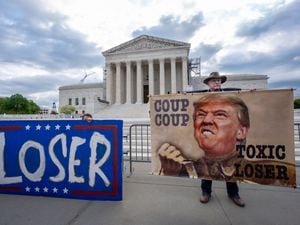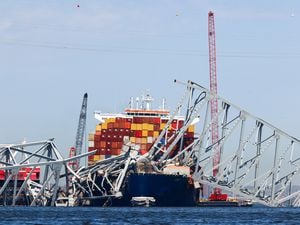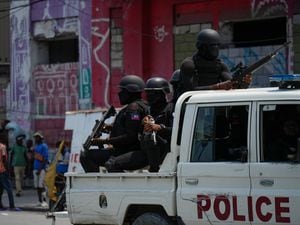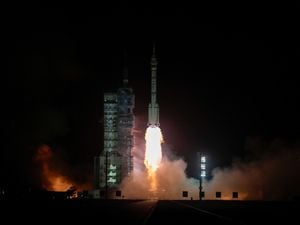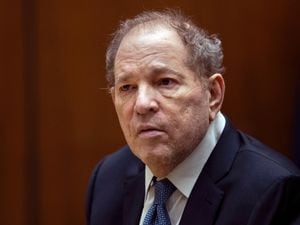Hawaiian protesters vow ‘prolonged struggle’ against giant telescope
Mauna Kea is considered sacred by some Native Hawaiians.
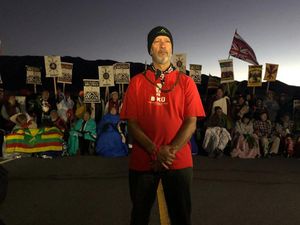
Protesters have vowed to continue demonstrating against the construction of a giant telescope on top of a mountain some Native Hawaiians consider sacred after they spent the day blocking the road to the building site.
About a dozen elders, or kupuna, sat in chairs at the start of the road on Monday, while another eight shackled themselves to each other over a grate in the road.
They acted after state officials announced they would close the road to the summit of Mauna Kea so they could begin bringing equipment to the construction site in coming days.

The confrontation was a dramatic start to what could be weeks or more of protests pitting scientific discovery against cultural preservation and indigenous rights.
Authorities did not arrest anyone, saying their priority was installing concrete barriers along a nearby main road to create a buffer between speeding cars and the large numbers of people congregating in the area. No construction vehicles went up to the summit.
Hundreds of protesters remain at the scene and many promised to continue their fight.
“We understand that this going to be a prolonged struggle,” said Kaho’okahi Kanuha, one of the protest leaders.
He said he was confident the telescope would not be built.

Astronomers are hopeful the 1.4 billion dollar (£1.1 billion) Thirty Metre Telescope will help them study the earliest moments of the universe after the Big Bang, as well as to identify more planets outside our solar system.
They favour Mauna Kea because the clear air and limited light pollution at its summit 13,796 feet (4,205 metres) above sea level makes it one of the world’s best locations for studying the skies. The peak is already home to about a dozen other telescopes.
Some Native Hawaiians view the summit as sacred, and say the presence of yet another telescope will further damage it.
Walter Ritte, a veteran Native Hawaiian activist, spent 11 hours lying on top of a grate in the road to prevent construction vehicles from going up the mountain.
He said protesters’ arms were connected through a series of metal pipes under the grate. Authorities would have had to cut the pipes to remove them, he added.

“It was so cold at four o’clock in the morning,” Mr Ritte said. “It was a test of our fortitude. This mountain is like our last stand.”
Telescope opponent Jennifer Leina’ala Sleightholm said she hoped peaceful protests would lead to an end to the project, while acknowledging that this is an unlikely scenario.
“I think I know what will happen, but what I hope will happen is I hope that they would just turn around and save our kupuna,” she said, using the Hawaiian word for elders.
Richard Ha, a Native Hawaiian farmer who supports the project, said he was encouraged that there seems to be some cooperation between protesters and law enforcement.

He said he sympathised with the protesters, but was hopeful construction will begin.
The project has been delayed by years of legal battles and demonstrations, drawing attention from the likes of Aquaman actor Jason Momoa, who has Native Hawaiian ancestry and has voiced opposition to the telescope.
Scientists selected Mauna Kea in 2009 after a five-year, worldwide search for the ideal site.
Protests disrupted a groundbreaking and Hawaiian blessing ceremony at the site in 2014. Attempts to begin construction in 2015 ended with arrests and crews pulling back.

Hawaii’s supreme court last year ruled construction would be legal. The project has permits and the state has given the company behind the telescope a green light to resume building. The company is made up of a group of universities in California and Canada, with partners from China, India and Japan.
The telescope’s primary mirror would measure 98ft (30 metres) in diameter. It would be three times as wide as the world’s largest existing visible-light telescope, with nine times more area.
Supporters say it will not only make important scientific discoveries but bring educational and economic opportunities to Hawaii.
Governor David Ige has said unarmed US National Guard units would be used to transport personnel and supplies and enforce road closures, but would not be used in a law enforcement capacity during the protests.

